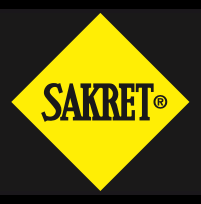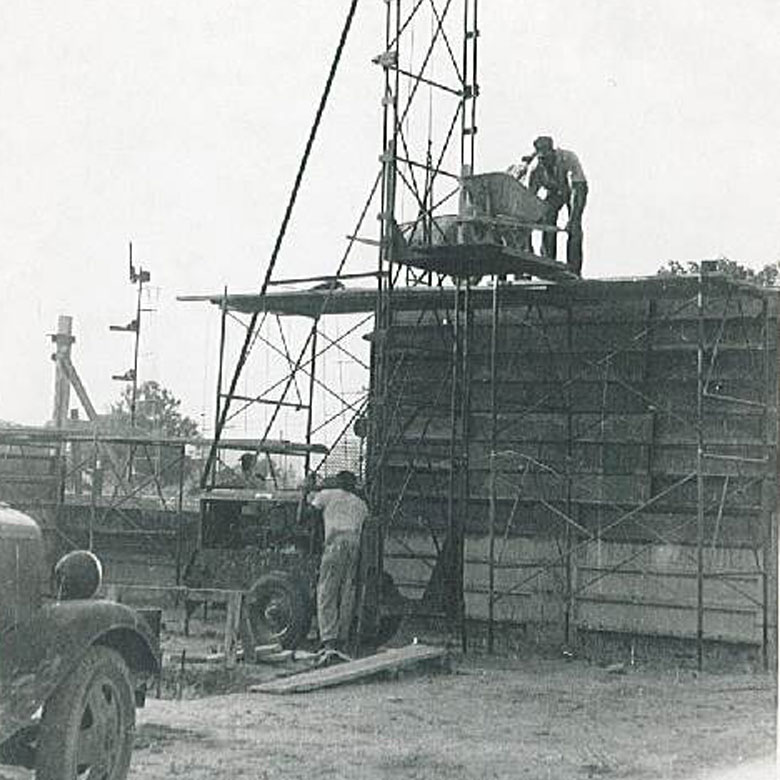When the American civil engineer Arthur C. Avril brought cement, sand and gravel onto the market in 1936 as ready-mixed dry mixes for various purposes, he created more than the first SAKRET building material. Avril was also the inventor of a previously unknown licence model in the construction industry. Within a few years, the SAKRET brand experienced a worldwide upswing that continues today.
THE SAKRET GROUP
"A family of like-minded people"
Three ingredients explain SAKRET's success: in addition to the high quality of the raw materials and the simple mixing at the construction site, proximity to the customer plays an important role. Arthur C. Avril was involved in this right from the start: In order to avoid high transport costs, he had to find a new model to transport the building material to the customer.
Regional proximity through licensees - that was the solution Avril developed. He travelled across the United States and convinced many local building material companies to sell the products locally with a SAKRET licence. After only a few years, this proved to be a true success model on the North American market.
Interest of German entrepreneurs
Years later, German entrepreneurs came across the product and were immediately enthusiastic: in 1966 they were granted the licence for the whole of Europe. The only condition for this geographically far-reaching licence was that the Avril family became co-owner of the licensee, SAKRET Trockenbaustoffe Europa GmbH & Co. KG.
In the following years, the licensees continued to expand the European network. First in Germany, then in the Netherlands, in Switzerland and throughout Europe. Today, the SAKRET brand is one of the largest manufacturers of ready-mixed dry mortars. To date, licenses have been granted for the brand in over 20 European countries as well as in the Middle East.
But the expansion goes on and on: SAKRET is still looking for partner companies from the building materials industry for further European expansion. Because through close cooperation, they all make significant progress together than each company alone.
Regional proximity, combined forces
What is special about the licensing model is that SAKRET does not seek financial participation. The licensees remain economically autonomous and pursue their business plan. They are local partners. They have the know-how and know what their customers need. This is part of the brand's recipe for success: the decentralised structure gives the SAKRET Group its regional strength and proximity to its customers.
The licensees are supported by SAKRET Europe. On the one hand, through the rights to use a brand that has an outstanding impact on the market.
On the other hand, the exchange of experience and knowledge helps the companies, which are in daily competition. The licensees form an independent SAKRET knowledge network, which the partners can make use of. More than 800 master products for building construction and civil engineering and the experience behind them make the brand a universal solution provider.
Against this unique horizon of experience of many companies in many different markets, licensees can also dare to take on orders that they could hardly serve from their classic portfolio.
Products across the market life cycle
In Germany, for example, SAKRET offers products suitable for every market life cycle - from DIY products for do-it-yourselfers to a sophisticated special approach for professional fabricators. The licensees make this know-how available to each other - and this makes the SAKRET network so unique.
However, global trends are not stopping at the building materials industry either. Digitalization is throwing the traditional industry into confusion with far-reaching consequences. Where previously telephone calls between personally known partners were sufficient to handle a business transaction, today online services and platforms are taking hold. SAKRET is facing the challenges of digitization - today and in the future.
The rules change, the game remains the same: SAKRET can rely on its products, its services and a strong corporate structure. The careful selection of licensees has meant that the network has remained what it has always been: a family of like-minded people.
Here is an overview of the history of SAKRET(E)
By clicking on "Confirm" further external content (videos) will be loaded from Youtube. Please consider our privacy policy.
Confirm
A company rich in tradition
More than 80 years ago the factory dry mortar was invented and SAKRET was founded.
History SAKRET


1950s
1957
The first license agreement outside the USA is concluded with Prodctora de Concreto in Mexico.
1959
The new plant in Sydney, Australia begins sales.


1960s
1960
South America has SAKRET. A license agreement is concluded with Meczla de Venezuela.
1965
A group of German entrepreneurs is enthusiastic about the SAKRET idea and brings it to Germany.
1966
SAKRET Trockenbaustoffe Europa, based in Germany, is established and becomes the licence administrator for Europe.
1967
SAKRET license agreements are concluded with companies from the Netherlands and Switzerland.
1980s & 1990s
1980s
SAKRET expands its product range by switching from sales of individual products to customer-oriented system solutions.
1992
After licenses were granted for East Germany in 1990, the plant is built in Riesa/Saxony.
1999
Before the turn of the millennium, SAKRET was represented with a license in 9 European countries.
2000s
2007
SAKRET focuses its brand communication on the building trade.
2010
Until 2010 SAKRET is represented with licenses in more than 25 European countries.
2011
SAKRET concludes a license agreement with a company from Greece.
2012
In Germany alone there are 13 SAKRET dry mortar plants with a total capacity of up to 1,5 million tonnes.










